Most people would prefer to spend their final years of life at home rather than in an institution, and supplying tools and services to make it possible to do so represents a lucrative emerging opportunity for HME/DME providers. Leading the industry’s efforts to claim a share of the “aging in place” market is Accessible Home Improvement of America (AHIA), a division of VGM Group, a national buying group for independent HME providers.
AHIA was launched in 2010 at VGM’s annual Heartland conference, and to date almost 400 companies are participating to expand the home modification business among HME providers according to Jerry Keiderling, president of AHIA in Waterloo, Iowa.
Providers are turning to home modification/aging in place as a way to diversify their revenue streams in these times of thin margins and lower reimbursements. Many forward-thinking providers are also staking their claims now on a likely future wave of sector growth as more Baby Boomers make plans for their later years. Among the tools to boost credibility and thus increase aging in place business for providers is AHIA’s creation of the Certified Environmental Access Consultant (CEAC) credential. The National Association of Home Builders also offers the Certified Aging-in-Place Specialist (CAPS) credential.
Embracing aging in place reflects a broader outlook among providers regarding how they can meet customer needs, says Keiderling. “Rather than focusing on equipment, we need to take our blinders off and look at the bigger picture, and it starts with having conversations with customers.”
But how can providers realize the full potential of the aging in place market? Awareness is a key aspect, so it’s important to spread the word about the industry’s successes. Providers looking to enter the field can also learn from the experiences of those who have already embraced the potential of an emerging market. The following pages highlight some successes from the front lines of this latest trend in the market
Home Health Depot
Because Home Health Depot, headquartered in Indianapolis, is strong in complex rehab and has a large wheelchair business, employees were often asked about accessibility construction projects. “It didn’t make sense to give the referrals away,” says David Hartley, owner and CEO. Instead, starting two or three years ago after attending a VGM Heartland seminar on aging in place, the company launched its own home modification business.
At the basic end of the spectrum, Home Health Depot installs standard aging in place products such as stair lifts, vehicle lifts, ramps, vertical platform lifts and grab bars. In the more complex construction category the company performs bath modifications and installs roll-in showers and walk-in tubs, and it can gut an entire bathroom and rebuild it from scratch. It is also involved in renovating kitchens, installing countertops, widening doors and performing other accessibility projects. Home Health Depot installs products from suppliers such as Bruno, Harmar, Pride Mobility and EZ-ACCESS. VGM also introduced Home Health Depot to Best Bath products, a line of roll-in showers and walk-in tubs that simplifies bathroom renovations with one-piece construction.
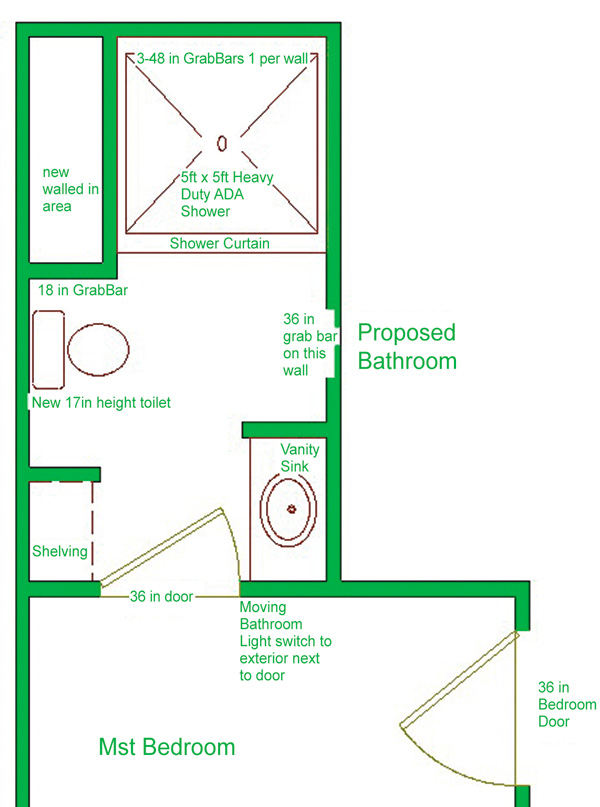
Home Health Depot is one of the largest and most comprehensive home medical equipment companies in the Midwest, with 160 employees and 14 branch locations in Indiana, Illinois, Iowa and Michigan. Each of the branches offers aging in place products and services in addition to HME equipment and supplies and adaptive equipment.
Hartley sees huge synergy between the home modification business and his core business, and internal cross-marketing helps the provider promote its ability to supply a “unique continuum of care.” Home modifications now make up about 15 percent of Home Health Depot’s business, and some projects have been more than $60,000.
Hartley and his staff advanced their knowledge about aging in place by pursuing CAPS and CEAC certifications. He also learned from Kansas State University about Universal Design principles, such as the need for extra spacing for a wheelchair between a tub and a commode.
Home construction is a very different business than HME/DME, and the differences are an obstacle to more people getting involved, Hartley observes. “It’s the same population of customers but a completely different business with no similarity to HME.” Other obstacles include a lack of construction expertise on staff. The economics aren’t there to support a partnering arrangement with an outside construction company, he contends. The competitive bid environment keeps margins too low to support profitability for both an HME provider and a construction company partner. “You’re trying to support two businesses instead of one.”
Hartley therefore created resources in-house to perform the work. All the sales reps are CEAC- and CAPS-certified. They have relationships with referral sources and go to homes to assess and bid on jobs, to meet with the homeowner and to generate a quote to send to the payer. There are basically four payers for home conversion business—state Medicaid waiver programs, veteran’s hospitals, vocational rehabilitation/worker’s compensation and private pay (cash)—and all of them are competitively bid. If the job is awarded, a project manager will complete the job using internal construction staff and based on CAD drawings created with the quote. “We use some subcontractors, mostly as a relief valve and for some specialized jobs, and they are all vetted beforehand,” he says.
The low-bid environment and large labor component of the projects is exacerbated by competition from “Chuck in a Truck” companies that have low margins, are not accredited and don’t do background checks, he explains. “In the HME business our cost is higher, which compresses margins, so you have to do a lot of business. You can’t just dip your toes into it.”
Hartley sees enormous potential for growth in the aging in place/home modification market, which is “literally in its infancy,” he says. “These are the early, early days. We are almost the pioneers of the business. The point is, in your market, this is your time to put your flag in the ground and say ‘we are the aging in place specialists.’ This will pay big dividends, whether it’s 10 years from now or 20 years from now.” Asking around among potential referral sources will quickly reveal if the need is already being filled locally and whether a provider is late to the game. Although private pay currently makes up only about 20 percent of the business, he sees the potential for the amount to increase to 50 percent in the next two to three years. “Customers will find that spending $10,000 or $15,000 on their home is less expensive than moving into an assisted living facility.”
It’s a mistake to assume too much knowledge on the part of referral sources, Hartley says. “These are 25 and 30 year-old social workers who have never seen a hammer in their life looking at these bids. It’s important to educate referral sources about quality products and the differences that make a quality job.” As referral sources become more educated, the requests become more specific and detailed, which helps make bids more comparable.
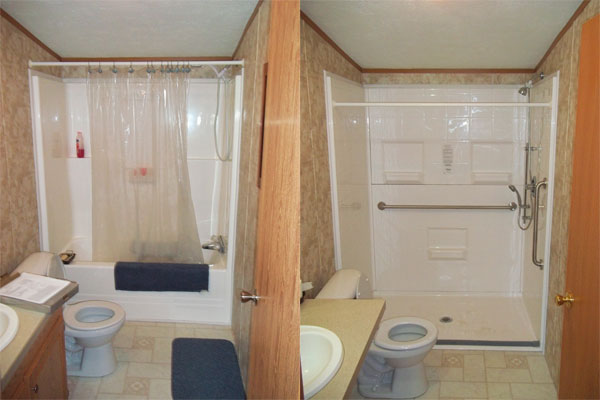
Access to Independence
Access to Independence has been doing home modifications for about 15 years and is therefore “ahead of the curve” compared to many HME/DME providers. “It was a natural tie-in for us,” says Vince Pelose, CEO. “A lot of clients were buying mobility items and needed someone to build a ramp, and a lot of general contractors did not have a good background in ADA (Americans with Disabilities Act) standards and guidelines.” Pelose’s background in rehab counseling and administration, and employees who are therapists and ATPs, equip the provider to analyze each customer’s accessibility needs.
Access to Independence provides a range of equipment and services throughout Ohio and western Pennsylvania including wheelchairs, seating and positioning equipment, stair lifts, scooters, lifts and ramps and disposable hygiene products. One Access to Independence location in Ravenna, Ohio, has 200 full- and part-time employees. The nonprofit organization was formerly affiliated with Easter Seals (until 1992). Located on 18 acres and with 27,000 square feet of floor space, the company includes a 9,000 square-foot showroom that invites customers to see and touch the equipment before they buy it and includes models of roll-in showers, ceiling track systems, porch lifts and working stair lifts. Plenty of warehouse space also enables Access to Independence to keep more inventory on hand and to react quickly to customer needs.
Access to Independence originally contracted with an outside company to install ramps, but found the contractors often took too long to get the job done. “We wanted to put in the ramp that day,” he says. “We didn’t want it to take a month to put in a roll-in shower. Our guys stay on the job until it is done, usually about two days from start to finish.” Pelose earned the CEAC certification, which enables him to analyze the short- and long-term accessibility needs in a home. The provider also employs a home modification supervisor with his own CEAC certification to help with site evaluations. There are six construction people on staff, including electricians, plumbers and carpenters. Typically the company doesn’t use outside contractors except, for example, for a large concrete job such as a whole driveway.
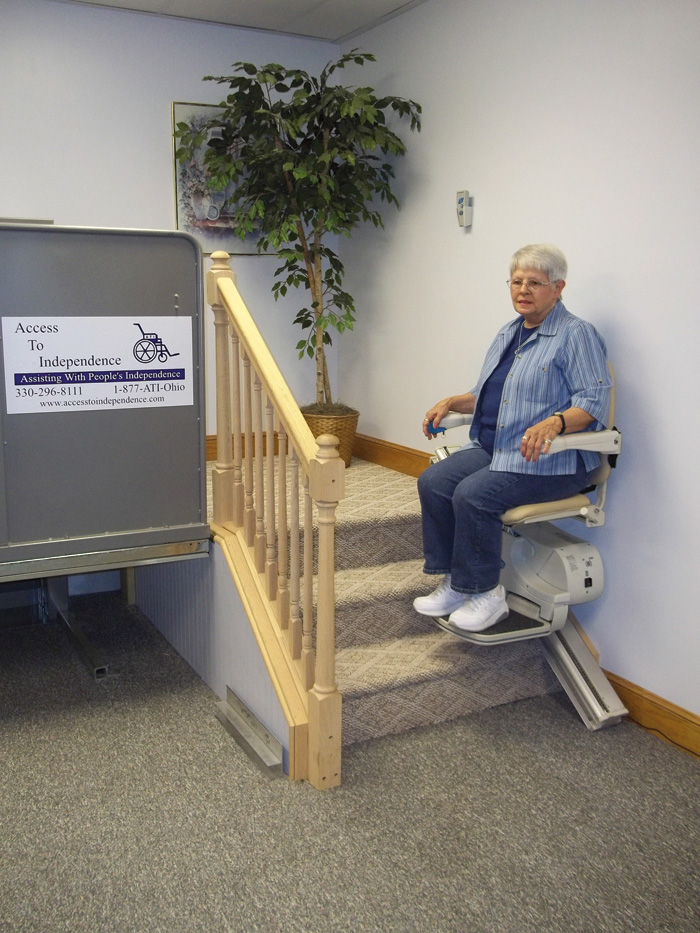
“The profit margin on home modification isn’t huge, but the projects are typically larger, so you’re making more money on the volume,” he explains. Payment is also faster, with 50 percent payment for a custom project received up front and the rest when the project is completed.
Pelose says making a home accessible doesn’t have to be expensive, perhaps costing as little as a few hundred dollars to install grab bars or make other minor changes. Access to Independence has also handled large jobs up to $80,000 or $90,000 that involved ceiling track systems covering several rooms, power-dropping kitchen cabinets and complete bathroom modifications. The company uses Liko ceiling track systems, Handicare stair lifts, EZ-ACCESS ramps, Moen grab bars and Best Bath accessible showers and bathtubs, among other suppliers.
“The goal is to work with the individual to see what specific needs they have,” says Pelose. Funding comes from Ohio’s Medicaid waiver program, the area’s Council on Aging and each Ohio county’s board of developmental disabilities, as well as from cash sales. Home modification makes up about 50 percent of the company’s business.
Pelose plans to transform 9,000 square feet of floor space into an “Aging in Place Superstore” with 30 or 40 displays showing products such as automatic door openers and ceiling track systems. The plan is to sell the products to existing contractors and to train them on installation, becoming in effect a distributor of the products. He hopes to have the new area completed in 2013.
Premier Home Care
A benefit for HME/DMEs entering the home modification business is that they understand the health care process, according to John O’Callaghan, vice president of the home accessibility and caregiving division at Premier Home Care. “You have to educate discharge planners and referral sources to understand what you do,” he says. “You also have to present options clearly to customers. ‘For XYZ amount of money we can give you back these areas to live in your home again, and it won’t cost you to go to a facility.’”
Premier Home Care has nine locations in Kentucky, including four retail showrooms in Elizabethtown, Louisville, Lexington and Richmond. Each retail location has an approximately 2,000 square-foot showroom. The home accessibility business began around four years ago and, along with the acquisition of a caregiver business, now augments the company’s core HME business.
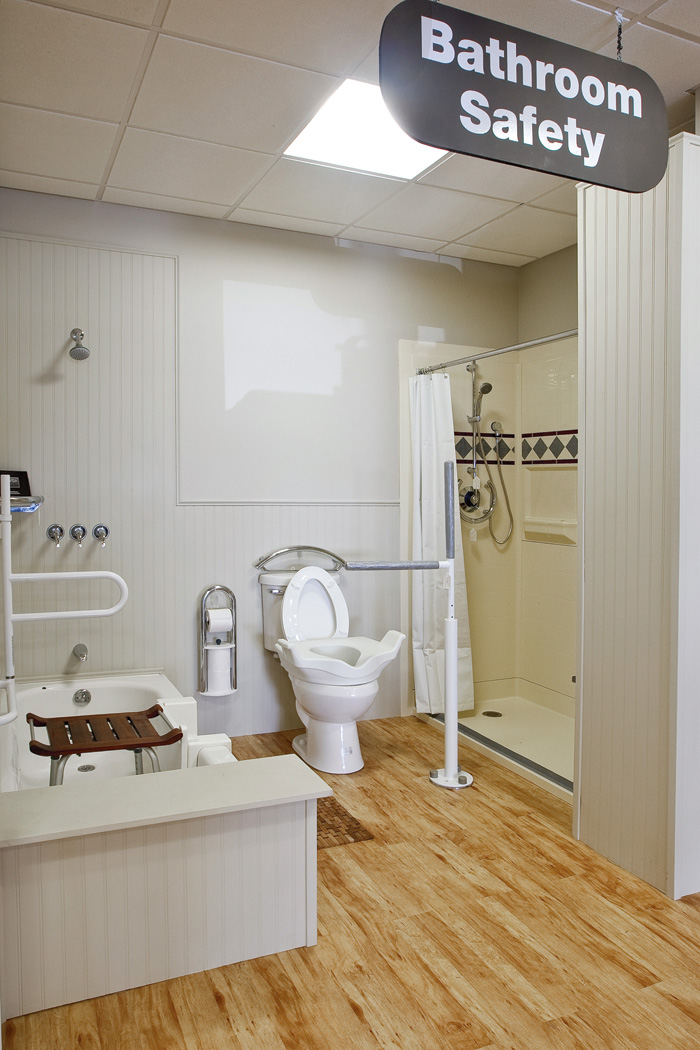
Expanding the company’s services to include home accessibility and caregiver services enables Premier Home Care to provide families, consumers and patients with everything they need to live safely at home. Home modification is less than 10 percent of the business, and the majority of the work is done in-house, with some specialty trades such as plumbing and tile installation contracted out.
O’Callaghan is CAPS certified, and both he and his home accessibility manager are CEAC certified. The home accessibility business is integrated as an additional service of the company, which has about 200 employees. He says most of the home accessibility business is private pay, with some state Medicaid, worker’s compensation and long-term disability insurance. He also says that timing is critical in serving the home accessibility market. “In the majority of projects you’re dealing with a reactionary situation. You have to get in and out and be very efficient.” Home accessibility contracting also requires extra time to consult with customers and to help people navigate their options.
Overall, he says the trend toward taking proactive steps to allow aging in place has not yet reached critical mass. O’Callaghan also says the trend toward Universal Design—designing structures to be accessible for all—has been slowed by the higher costs, for example, of putting in wider doors for wheelchair access, levers instead of doorknobs and special switches. “It’s a great idea, but will anyone pay for it?”
The largest job his company has done is probably a full bathroom remodel, which involves gutting a bathroom, moving a wall or two, installing a new floor, vanity, right-height commodes and an access shower, etc. Projects typically range from $10,000 to $25,000. Harmar stair lifts are a big home accessibility product for the provider, as well as vertical platform lifts. His work with ceiling lifts has been limited to one room.
O’Callaghan notes that the aging in place market does not actually involve marketing to senior citizens or the disabled. “It will be the adult children who make the decision,” he says. “You have to be an expert consultant. Psychologically, it is sometimes difficult to get the parent to accept the need for accommodation. You have to take the decision out of the parent/child dynamic. The parent doesn’t want to do it, but the child doesn’t want to fight them.
“Home accessibility is about creative solutions, not about the biggest dollar value. A lot of small products in the store contribute to home accessibility, such as an extra handheld shower, something simple.”
Hammer Medical Supply
Hammer Medical Supply has been involved for many years with ramps, stairway lifts, wheelchair platform lifts and vehicle lifts, which were installed through the service department. After expanding over the last several years into home modifications, the company now has four CEAC-certified employees and installs walk-in tubs and roll-in showers and performs other construction projects. With a large rehab presence, the provider was already doing home assessments and was involved in mobility, so the transition to home modification was an easy one.

Locally owned since 1872, Hammer Medical Supply has 114 employees providing quality HME products and services in nine central Iowa locations: Des Moines, Clive, Chariton, Creston, Marshalltown, Newton, Oskaloosa and Ottumwa. In 1975 the HME/DME business was separated from the pharmacy business and became a complete home health company.
Seeking to capitalize on the company’s name recognition and reputation, Hammer Medical Supply hired a contractor/homebuilder to do bids and oversee installation. Several employees attended the VGM Heartland meeting and received onsite training from vendors to equip a house on display with various accessibility products. “Our entire staff is fully invested in our success,” says Terry Flatt, executive vice president. The provider’s home modification business has doubled in each of the last two years and currently makes up about 5 percent of the company’s revenue.
“Our reputation and the resources we have, and the experience we had, made it possible for us to expand in this area,” he says. Home modification opportunities are integrated into the company’s business. For example, the nine walk-in retail locations have products on display to provide additional exposure, which leads to dialogue about what resources are available. Showrooms range from 800 to 3,000 square feet. Many have bath displays, and Best Bath is providing a “mobile showroom” that will be traveling to various locations to be displayed for 30 days.
“We started out slow, with one individual and one truck and had the expectations to bid the job, price it out and to install it,” Flatt recalls. “Looking back, I see we waited too long to expand the program.” Having one person in charge meant he would be on the road and not available for customer follow-up. An internal coordinator has been added to oversee scheduling and coordination and to improve communication with customers. “It is an integral part of everything, and it has synergy with other things we do.”
Flatt says he has yet to see a lot of Baby Boomers willing to open their wallets and pay for aging in place. “We’re still finding a huge need for low-cost products for various parts of the population.” Customers also tend to think of the services as part of their health care and want coverage by Medicare or insurance, which isn’t usually the case.
“Our company has a strong reputation, which is important because the elderly have been taught to be suspicious,” Flatt says. “We are a household name in a lot of our markets and people know that we will stand behind what we do.”
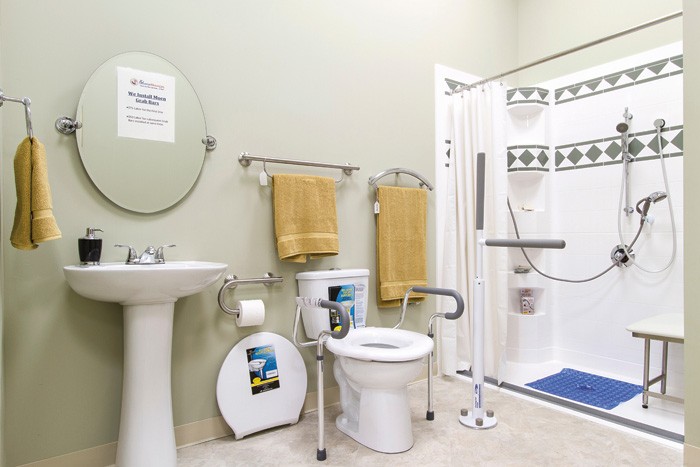
Working with Local Contractors
Bob Lake is representative of a new breed of construction industry professionals trained to complete aging in place and home modification projects. His message to HME/DME providers: “Give us a call.” Proprietor of Lake Home Services in Downey, Calif. (562-413-0584 or boblake@ca.rr.com), Lake is a CAPS-certified licensed general contractor who graduated from the University of Southern California Executive Certificate Program in Home Modification sponsored by the Ethel Percy Andrus Gerontology Center. His work in home modification includes widening doorways to accommodate wheelchairs; installing barrier-free showers, walk-in tubs and wheelchair ramps; and improving lighting and eliminating trip-and-fall issues. He’s handled worker’s compensation-related modifications as a team member with occupational therapists, physical therapists and other health-care professions. He is a dealer for EZ-ACCESS ramps, Best Bath systems, Mac’s Lift Gate (vertical lifts) and Shelf Improvement (rollout shelves).
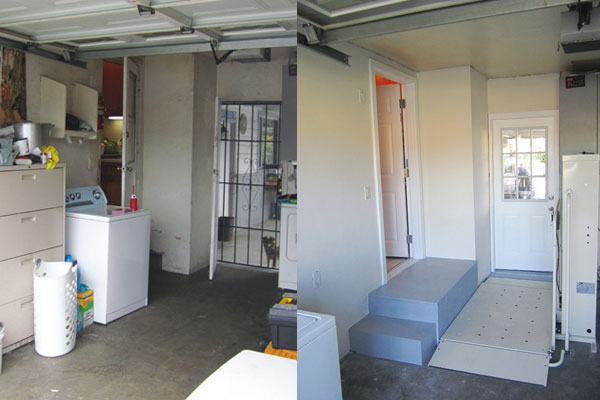
The southern California contractor says he would welcome a closer working relationship with the DME/HME community in a cooperative or networking arrangement. In fact, Lake still gets work from a visit he made three or four years ago to a local DME/pharmacy when he was looking for a tray for his mother in law’s walker. He noticed a selection of grab bars for sale and the DME said they received calls every day to have them installed. Lake offered to help and he still gets calls from customers referred by the DME.
Lake says a similar informal arrangement could be expanded to include a wider range of home modification projects. He acknowledges providers’ concerns about referring customers to a builder, and putting their reputation on the line when they do. The key is to find someone who shares a passion for helping to make homes accessible. “Pick a contractor with specialized education who cares about the client,” he says. “I’m helping them out, keeping their customer happy,” and if an HME/DME gets good feedback, more projects will be forthcoming.
Providers can find people in their local area who are trained by using the National Association of Home Builders’ website (see sidebar), which lists CAPS-certified builders by ZIP code. Lake says another resource is the National Association of the Remodeling Industry (NARI), which provides classes in Universal Design. Networking through local chapters can put HME/DMEs in contact with dependable contractors seeking to provide good service.
Jerry Keiderling, president of Accessible Home Improvement of America (AHIA), says there is also a listing of CEAC-certified contractors on the AHIA website (sidebar), and AHIA provides help connecting smaller DMEs with local contractors. Keiderling says that networking with, subcontracting to or otherwise partnering with a local construction company (involving commissions, referral fees, etc.) is a likely route for a smaller HME/DME looking to get into home modification. When timing is a priority, additional fees for priority service can help to move home modification projects to the front of the queue. Sometimes an HME/DME will contract with a builder and then bill the customer or the payer source. As the business grows, however, Keiderling says most providers would probably bring the business in-house by hiring a certified builder.
Sidebar
Helpful Hardware
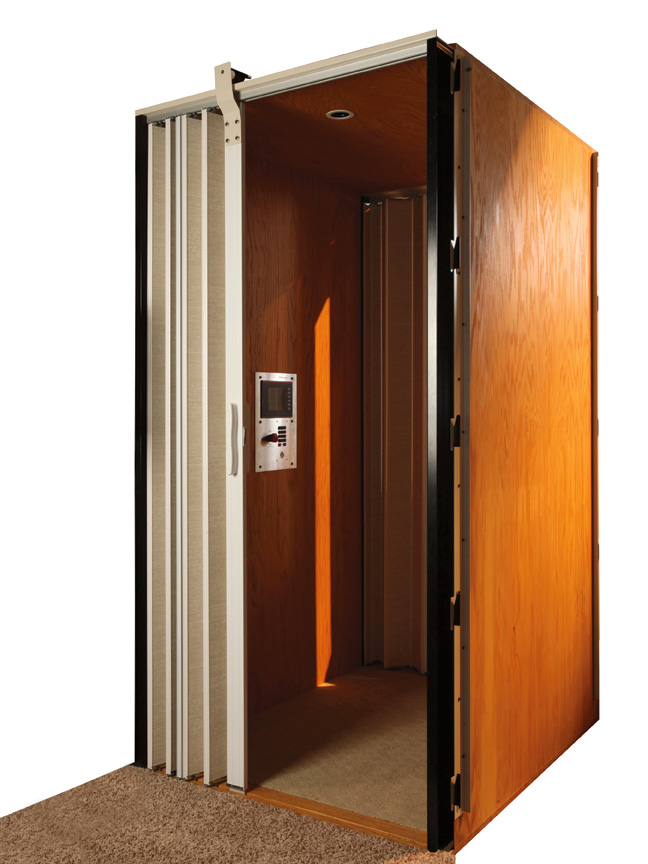 With residential elevators enjoying a boom as seniors embrace aging in place, Harmar (www.harmarmobility.com) has introduced the affordable Everest elevator line as a solution for new homes or renovations. “We recognized the need for a quality elevator that would fit affordably into a small footprint for residential use,” according to Chad Williams, the company’s president. “Our engineers built Everest from the ground up using a proven drive system while its efficient design makes it compact and easy for the homeowner to maintain.”
With residential elevators enjoying a boom as seniors embrace aging in place, Harmar (www.harmarmobility.com) has introduced the affordable Everest elevator line as a solution for new homes or renovations. “We recognized the need for a quality elevator that would fit affordably into a small footprint for residential use,” according to Chad Williams, the company’s president. “Our engineers built Everest from the ground up using a proven drive system while its efficient design makes it compact and easy for the homeowner to maintain.”
Although designed to be affordable, Everest is upscale in appearance and features, from a color LED touchscreen with interactive control design to contemporary stainless steel trim that complements a wide selection of wall panels, hand rails, door sill and ceiling options. For comfort and noise-abatement, Everest includes a Quiet Drive System with Soft Start and Soft Stop technology.
Other suppliers include:
Best Bath Systems—manufacturer of safe, comfortable and durable showers and walk-in tubs for installation in the home.
www.best-bath.com
Bruno Independent Living Aids—manufacturer of stairlifts, chair lifts, curved stair lift, vertical platform lifts and products to lift wheelchairs, scooters or powerchairs.
www.bruno.com
EZ-ACCESS—providers of portable and modular ramps, lifts, commercial ramp systems and wheelchair accessories.
www.ezaccess.com
Handicare—provider of LinidoSolutions bath safety products along with Minivator/Sterling and Freelift series lifts.
www.handicare.com
Liko—a pioneer in the design and manufacture of user-friendly lifts, slings and patient transfer accessories. Liko is part of the global medical technology leader Hill-Rom.
www.liko.com
Moen—supplier of grab bars, hand grips and tub, shower and toilet safety products that are durable and ADA-compliant.
www.moen.com
Prairie View Industries—PVI wheelchair ramps are safety tested and listed by Underwriters Laboratories, Inc., and the NSF International.
www.pviramps.com
Pride Mobility—source for high-performance mobility products including power chairs, scooters, travel mobility products, lift chairs and vehicle lifts and ramps.
www.pridemobility.com
Accessibility Info
Access to Independence
www.accesstoindependence.com
Accessible Home Improvement
of America (AHIA)
A division of VGM Group
www.accesshomeamerica.com
Gamburd
www.gamburd.com
Hammer Medical Supply
www.hammermedical.com
Home Health Depot
www.hhdepot.com
National Assn. of Home Builders
www.nahb.org
Premier Home Care
www.premierhomecareinc.com




